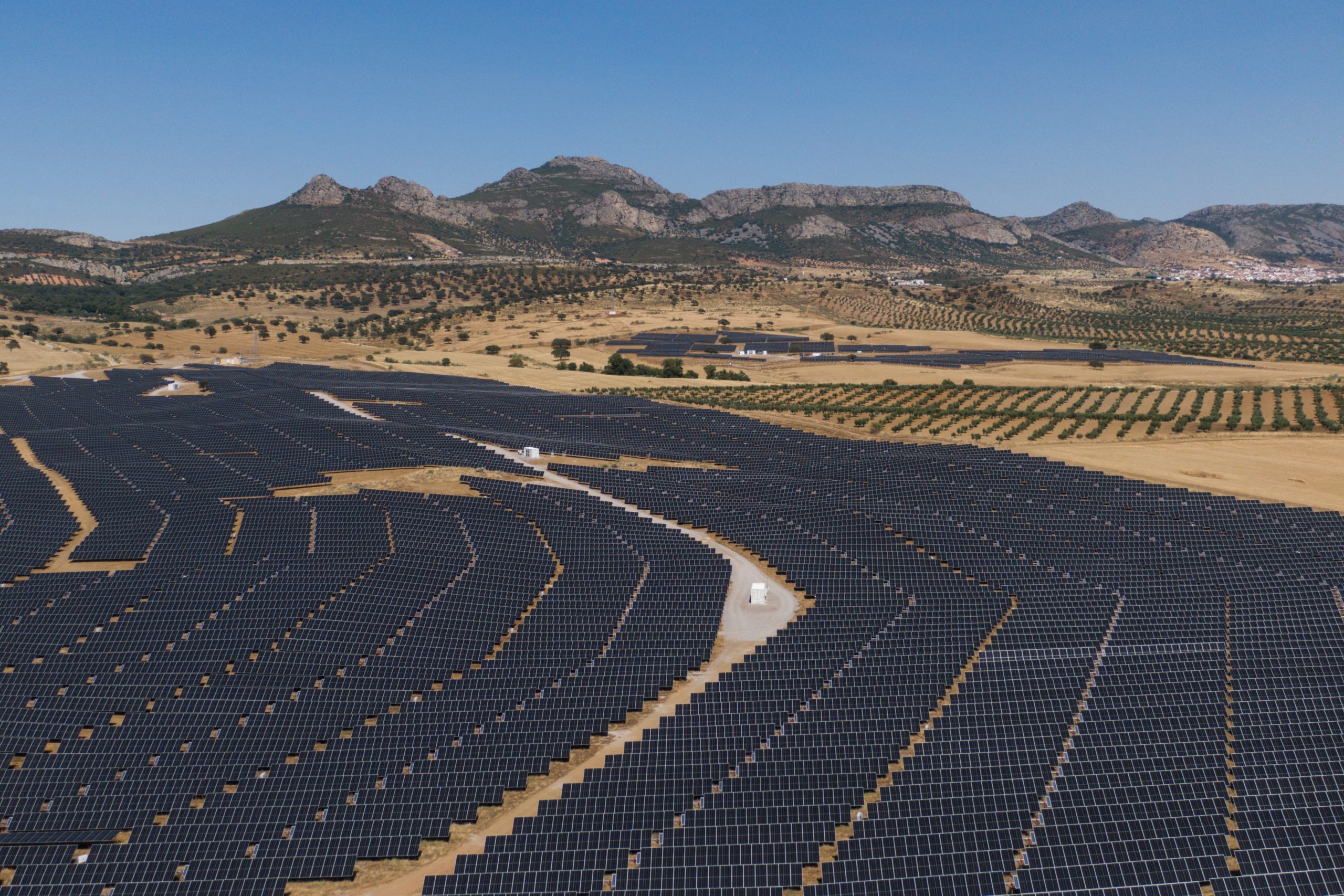The homokinetic technology of the two-row tracker allows it to adapt to the complex orography of this 30MW plant
Axial has once again successfully solved a particularly complex photovoltaic project thanks to the use of its AxialTracker Twin. The Spanish company, a global benchmark in the design, manufacture and operation of solar trackers for utility scale photovoltaic projects, has just completed the supply of 30MW for a new photovoltaic plant located in Spain.
The project was characterized by steep slopes in both directions, with maximum gradients of around 15% (8º). An added difficulty that Axial overcame thanks to the homokinetic technology incorporated in its AxialTracker Twin. In addition, the Twin also makes it possible to coordinate both rows of the tracker without the need to keep them parallel to each other. A system that responds to the needs of its customer, offering maximum safety and product quality.
In this regard, Axial’s Chief Sales Officer, Antonio Robredo, emphasized that “our maxim is to offer our customers excellence in projects that present special technical difficulties. Since the launch of our Twin two-row tracker, we have been continuously developing and incorporating technical improvements and updates. We were the first company to use homokinetic technology in our tracker, making us a global pioneer. That is why we are leaders in the sector, both in the Spanish market and in the European and Latin American markets”.
70GWh of clean energy
For this project, a combined technology has been used, employing both Twin bifilar trackers and 1P trackers, with a design that adapts exactly to the specific requirements of both the client and the orography.
The plant will generate around 70GWh of clean energy per year, avoiding the emission of 56 tons of CO2 into the atmosphere. This will provide energy to 18,400 homes annually. A new step with which Axial continues to promote the decarbonization of the planet.
AxialTracker Twin: the first twin-row tracker with homokinetic technology
Axial was the first company worldwide to incorporate homokinetic transmission technology in the design of its trackers. A solution that allows both rows of the tracker to work perfectly coordinated without having to be aligned and parallel to each other.
In this way, the great advantage offered is to be able to locate the trackers in irregular orography, since they can work with different slopes and misalignments, avoiding the need to carry out costly earthworks. In addition, this also contributes to sustainability, since it implies a reduction of the environmental impact in all projects.
With only one vertical module, this two-row solar tracker shares motorization and electronics between both rows. This improvement also facilitates subsequent maintenance and increases safety.
In addition, the stresses due to wind loads are distributed between the two structures, providing a point of embedment in each tracker that allows the stresses to be distributed over the ground.
Thanks to this mechanism, the amount of torsion that the bifilar tracker can withstand is twice the amount that it would withstand with a pusher, allowing longer trackers to be designed, reducing costs and optimizing the number of pillars.
Axial
In recent years Axial has established itself as an international benchmark in the design and manufacture of solar trackers and fixed structures for photovoltaic installations. One of its main hallmarks is its commitment to a high level of technological development, which allows it to provide great advances in the design and manufacture of solar trackers. It is also a pioneer in key aspects such as safety in the face of adverse weather conditions such as wind.
The company is present in all phases of the projects: from their initial design to their execution. Axial’s mission is to accompany its customers to provide them with the best possible advice, offering solid solutions to achieve excellence and customer satisfaction.









